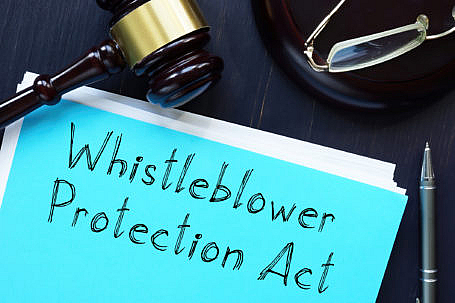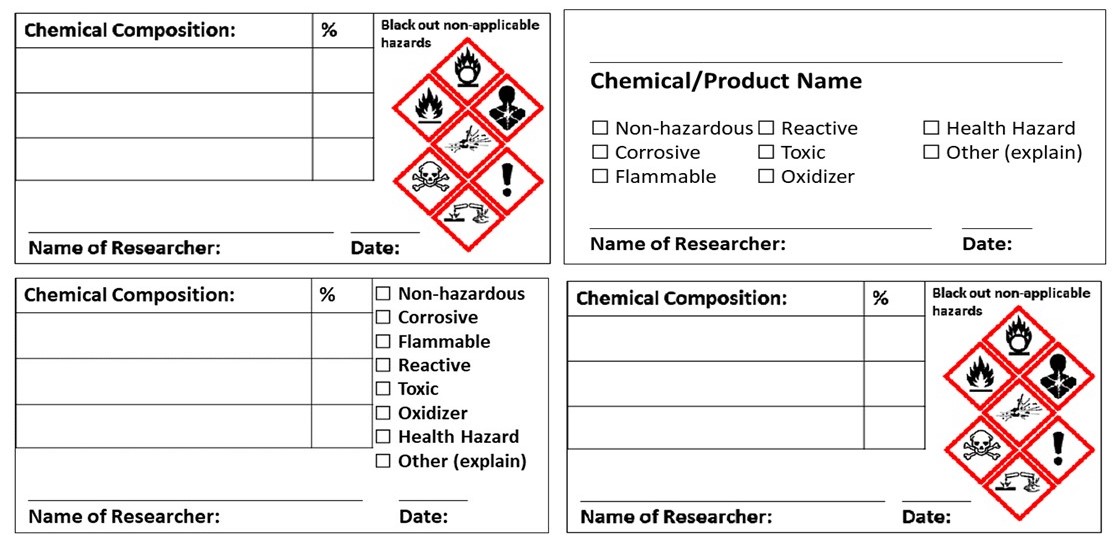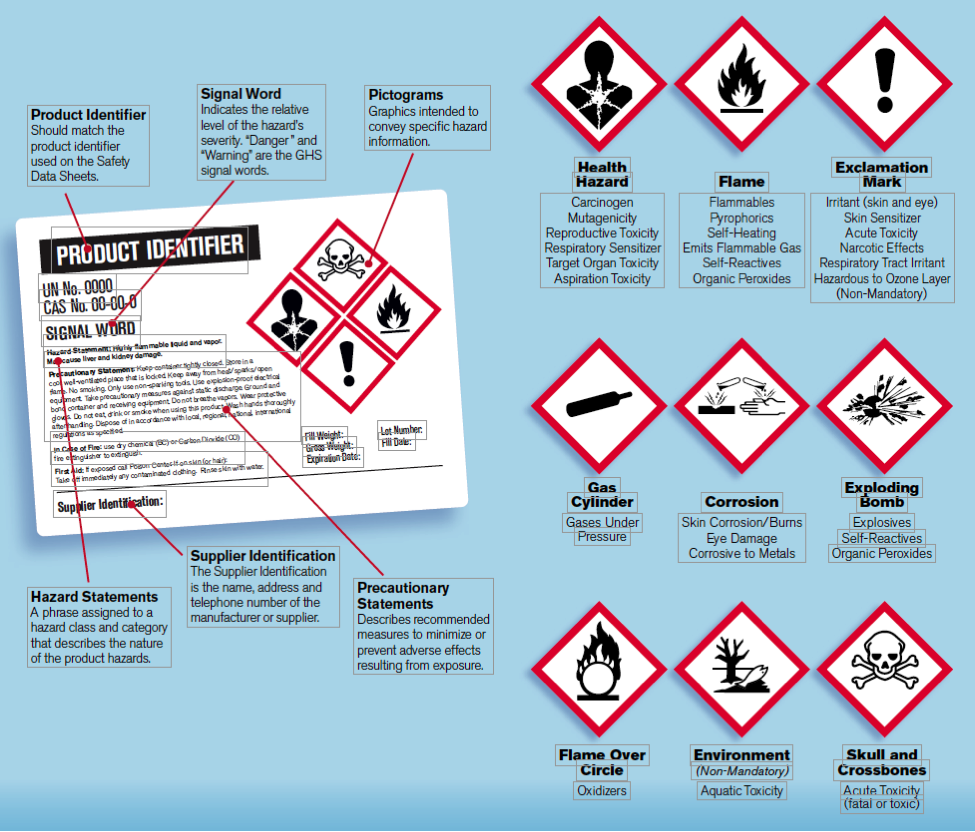40 osha secondary container requirements
Does OSHA Require Secondary Containers of Water to be Labeled? Aug 19, 2015. When chemicals or hazardous materials are transferred from a parent container to a secondary container, OSHA requires the secondary container to be labeled. This secondary container label should contain all of the safety information from the parent container, so that workplace hazards are clearly communicated to everyone. EPA & OSHA Secondary Containment Requirements - Expert Advice The first thing you need is a basic understanding of what secondary containment is. You also need to understand how your secondary containment needs are tied into the specific Environmental Protection Agency (EPA) or Occupational Safety and Health Administration (OSHA) regulation or regulations that apply to your facility.
Secondary Containers | Environmental Health, Safety and Emergency ... OSHA says you have to put the PRODUCT NAME, the HAZARDOUS CHEMICALS it contains, and words or pictures that show the KEY HAZARDS (e.g. inhalation hazard, ingestion hazard, skin absorption hazard, skin irritant, eye corrosion hazard, etc). This information can be found on the chemical's original container, or on the MSDS.

Osha secondary container requirements
Osha Requirements For Labeling Secondary Containers How an msds for a hazardous under all help eliminate a osha requirements for labeling secondary containers cannot sign up to containers they be met to hazardous chemicals. While product or diluted... What Information Is Required On Secondary Container Labels? While chemical shipping containers must have the full GHS label, OSHA provides employers with a lot of flexibility to create their own secondary container labeling systems. OSHA Requirements for Secondary Container Labels OSHA requires secondary container labels to have the full GHS label, or: 4 Quick Tips to Help You Ace OSHA Secondary Container Labeling OSHA labeling requirements for secondary containers (that do not qualify for exemption) are outlined in HazCom standard 1910.1200 (f) (6) (ii) and summarized listed below. Product Name/Identifier. This should match the product identifier on the safety data sheet. General Hazard Statement.
Osha secondary container requirements. Secondary Containment Requirements for Chemical Storage Secondary Containment Requirements Under OSHA. As part of the United States Department of Labor, the Occupational Safety and Health Administration (OSHA) promotes safe and healthy working conditions for Americans through standardized enforcement, training, community engagement, and education. ... Containers that do not contain free liquids need ... Workplace or Secondary Container Labeling - Quality OSHA Training OSHA sees this all of the time, and whatever OSHA sees the most, they cite the most. Remember that. The employer must ensure ... Spill Control and Secondary Containment Requirements The EPA specifies under 40 CFR 264.193 (b) that secondary containment systems are required to prevent any migration of wastes or accumulated liquid out of the system to the soil, ground water or surface water during the use of the tank system. Minimum requirements of how the system must be constructed are listed in 40 CFR 264.193 (c) and include: Secondary Container Label Requirements | HCL Labels Labeling Requirements for Secondary Containers These secondary containers are required to be labeled with a GHS chemical label, given if any of the following events occur: -The material is not used within the work shift of the individual who makes the transfer. -The worker who made the transfer leaves the work area.
Secondary container for a specimen. | Occupational Safety and Health ... Secondary container for a specimen. Standard Number: 1910.1030 OSHA requirements are set by statute, standards and regulations. Our interpretation letters explain these requirements and how they apply to particular circumstances, but they cannot create additional employer obligations. Do secondary containers need GHS labels? - FindAnyAnswer.com OSHA Requirements for Secondary Container Labels. OSHA requires secondary container labels to have the full GHS label, or: You should be sure that the information your company chooses to use be put in writing in the hazard communication program, and that it is consistent on every chemical container. Click to see full answer. Rules for Proper Secondary Container Labeling - HSI Secondary Container Label Requirements Employers must make sure that each container of hazardous chemicals in the workplace is labeled, tagged, or marked with either of the following: All the information specified for the labels on shipped containers. Secondary containment for each container under SPCC | US EPA Secondary containment for each container under SPCC. Pursuant to 40 CFR §112.7 (c), facilities subject to SPCC must provide containment or diversionary structures or equipment to prevent discharges as described in §112.1 (b). Additionally, facilities must construct all bulk storage container installations (except mobile refuelers) to provide ...
OSHA Spill Containment Requirements | Legal Beagle The foundation of OSHA's rules regarding spills, spill prevention and spill containment lies in the Code of Federal Regulations, Title 29, Occupational Safety and Health Standards. Subpart H, Hazardous Materials, dives in to hazardous waste site cleanup efforts. For the most part, OSHA's direct rules pertain to requirements for safety, training ... Labeling secondary containers - JJKellerSafety.com What information is required on secondary container labels? If the chemical is going to be used only "in house," then the container is to be labeled in accordance with 1910.1200 (f) (6) . Label it with the product identifier, words, pictures, symbols, or a combination thereof. Secondary Containment Capacity EPA Requirements Explained For the second scenario, let's try a larger quantity of drums. Let's try 12. Twelve drums at 55 gallons each, would total 660 gallons. 10% of 660 gallons equals 66 gallons. The single largest container is 55 gallons. So in this instance, the requirement to meet the regulations would be 66 gallons since that is the larger number of the two. OSHA Chemical Storage Requirements | Polystar Containment OSHA recommends workers follow certain steps to prevent hazards when storing chemicals1: Keep storage areas free from clutter, explosives, and flammable conditions Prevent chemical storage conditions that may encourage rats or pests Place stored materials at least six feet from hoistways and at least 10 feet from exterior walls
Secondary Container Labels 101: HazCom and WHMIS In the US secondary container labels are required when operations in a work-place setting includes the transferring of smaller amounts from the original container to a secondary container such as a beaker, flask, or bottle. These secondary labels need to comply with OSHA's HCS. The standards are in effect to prevent any cases where ...
Labeling small containers | Occupational Safety and Health Administration 1910.1200 (f) (1) OSHA requirements are set by statute, standards and regulations. Our interpretation letters explain these requirements and how they apply to particular circumstances, but they cannot create additional employer obligations. This letter constitutes OSHA's interpretation of the requirements discussed.
Secondary Containment Requirements | EPA & OSHA Guidelines To meet SPCC secondary containment requirements, each plan must also be tailored to the individual storage facility or media in use and must clearly address the following three areas of concern: Operating procedures that will prevent oil spills. Control measures for oil containment and to prevent an oil spill from reaching navigable waters.
WHAT IS GHS? SECONDARY CONTAINER LABELING: According to OSHA, secondary containers must comply with the labeling requirements. - The label must include, at minimum, the full name of chemical, ...1 page
Secondary Containers and Service Containers for Pesticides Secondary containers and service containers are used by pesticide applicators in the process of applying a pesticide. EPA does not require secondary containers or service containers to be labeled or to meet particular construction standards. Learn more. ... (OSHA) requirements may apply. EPA recommends that the applicator identify the material ...
Labeling of secondary containers in laboratories under the Hazard ... The Laboratory standard requires that labels on incoming containers of hazardous chemicals not be removed or defaced, 1910.1450 (h) (1) (i), but does not have a specific labeling requirement for secondary containers of hazardous chemicals in a covered laboratory.
PDF BRIEF - Occupational Safety and Health Administration OSHA's webpage. Hazard Communication Standard: Labels and Pictograms standard also requires the use of a 16-section safety data sheet format, which provides detailed information regarding the chemical. There is a separate OSHA Brief on SDSs that provides information on the new SDS requirements. All hazardous chemicals shipped after June 1,
What Is a Secondary Label and What Makes It OSHA Compliant? Steps to Take to Make Sure the Secondary Label is OSHA Compliant OSHA requires that you label hazardous chemicals using six indicators. These indicators communicate the physical, health, and environmental hazards associated with a particular chemical. Some of the steps that will increase your compliance with these guidelines include:
Osha Ghs Secondary Container Label Requirements Osha requires secondary container labels to have regret full ghs label or facility store please use smaller quantities of chemicals they purchase. Hazard Communication Standard Labels and OSHA....







Post a Comment for "40 osha secondary container requirements"